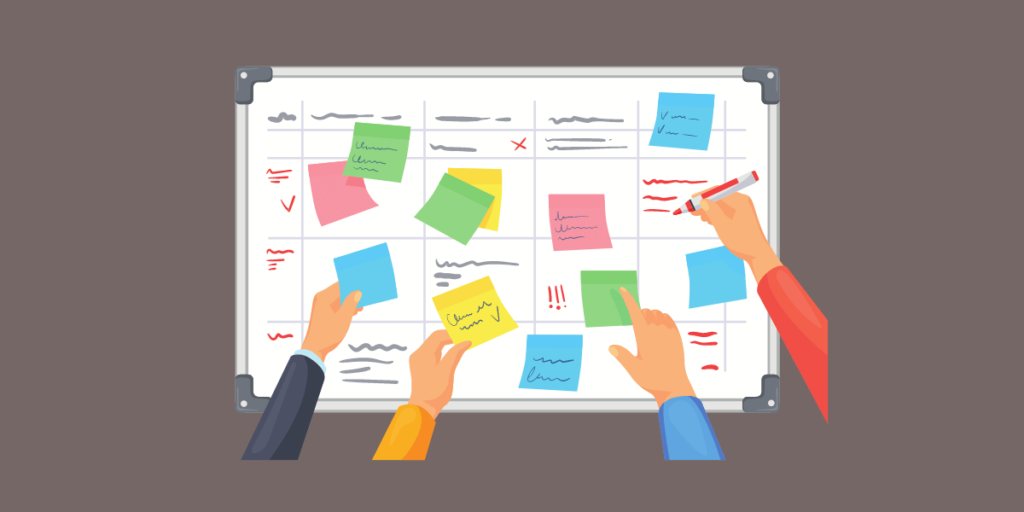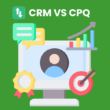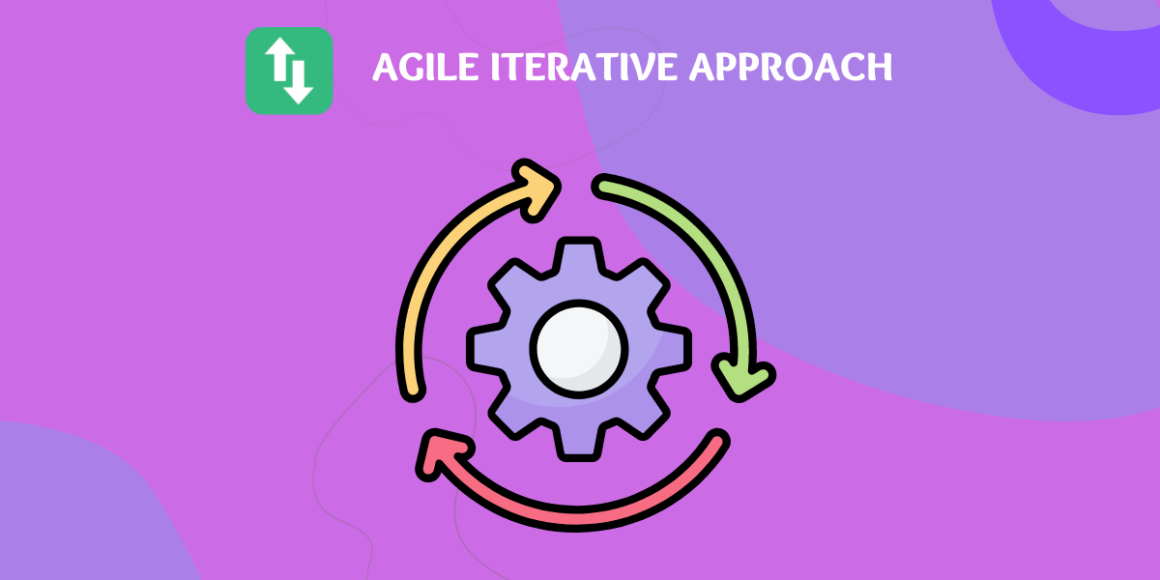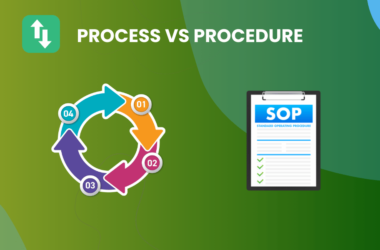Table of Contents Show
The agile iterative approach is a project management methodology that emphasizes flexibility, collaboration, and continuous improvement.
By combining the principles of agile development with iterative processes, this approach enables teams to adapt to changing requirements, deliver value incrementally, and enhance project outcomes.
What is Agile Development?
Agile development is a set of principles and practices that prioritize adaptability, collaboration, and rapid delivery. The Agile Manifesto, created in 2001, outlines the core values of agile development, which include:
- Individuals and interactions over processes and tools
- Working software over comprehensive documentation
- Customer collaboration over contract negotiation
- Responding to change by following a plan
These values emphasize the importance of flexibility, teamwork, and delivering value to customers.
The Agile Approach
The agile approach in project management focuses on breaking down projects into smaller, manageable pieces called iterations or sprints. Each iteration involves planning, designing, developing, and testing a specific set of features or functionalities.
This approach contrasts with traditional methodologies like Waterfall, which follow a linear sequence of phases.
The Concept of Iteration in Agile
Let us now look at the concept of iteration in Agile.
What is Iteration?
In the context of project management, an iteration is a defined period during which a team works to complete a specific set of tasks or deliverables.
Iterations typically last from one to four weeks, depending on the project’s complexity and the team’s preferences.
The Iterative Methodology
The iterative methodology is a project management approach that involves breaking down a project into smaller, manageable pieces and working on them in cycles.
Each iteration builds upon the previous one, allowing for continuous improvement and adaptation to changing requirements.
Iterative development differs from incremental development in that it focuses on refining and enhancing existing features rather than adding new ones. Incremental development, on the other hand, involves adding new features to the product in each iteration.
The Agile Iterative Approach Explained
What is an Agile Iterative Approach?
The agile iterative approach combines the principles of agile development with the iterative methodology. It involves breaking down a project into smaller, manageable iterations and working on them in a series of sprints.
Each sprint focuses on delivering a specific set of features or functionalities, and the team works collaboratively to complete the tasks within the sprint.
Key Components of the Agile Iterative Approach
The agile iterative approach thrives on specific components that facilitate its effectiveness in project management.
Two of the most critical elements are sprints and iterations, along with the defined roles within an agile team.
Understanding these components is essential for successfully implementing this methodology.
Sprints and Iterations: What They Are and How They Function
Understanding Sprints

A sprint is a time-boxed period during which a specific set of tasks or features is completed.
Typically lasting between one to four weeks, sprints allow teams to focus their efforts on delivering a functional piece of the product. The goal is to create a potentially shippable product increment by the end of each sprint.
How Sprints Function:
- Sprint Planning: At the beginning of each sprint, the team conducts a sprint planning meeting. During this session, they review the product backlog (a prioritized list of features and tasks) and select items to work on during the sprint. The team estimates the effort required for each task, ensuring they commit to a realistic workload.
- Execution: Once the sprint begins, the team collaborates daily to work on the selected tasks. This period involves coding, testing, and integrating new features, with a strong emphasis on teamwork and communication.
- Daily Stand-ups: To maintain momentum and address any roadblocks, the team holds daily stand-up meetings. These brief sessions allow team members to share their progress, discuss challenges, and plan their work for the day.
- Sprint Review: At the end of the sprint, the team conducts a sprint review meeting. They demonstrate the completed work to stakeholders, gather feedback, and discuss any adjustments needed for the next sprint.
- Sprint Retrospective: Following the sprint review, the team holds a retrospective meeting to reflect on the sprint. They discuss what went well, what could be improved, and how to implement changes in future sprints. This continuous feedback loop is crucial for fostering a culture of improvement.
Understanding Iterations
While sprints are a specific type of iteration, the term iteration encompasses a broader concept.
An iteration refers to any cycle of development that allows teams to revisit and refine their work. In agile, iterations can occur at various levels, including sprints, but also in terms of product releases and enhancements.
How Iterations Function:
- Incremental Development: Each iteration builds upon the previous one, allowing teams to incrementally develop the product. This means that after each iteration, the product is more complete and closer to the final vision.
- Feedback Integration: Iterations allow for the integration of feedback from stakeholders and users. After each cycle, teams can assess user reactions and adjust their plans accordingly, ensuring that the final product aligns with customer needs.
- Risk Mitigation: By breaking the project into iterations, teams can identify and address risks early in the development process. This proactive approach minimizes the likelihood of major issues arising later in the project.
Roles and Responsibilities in an Agile Team
The success of the agile iterative approach hinges not only on the processes but also on the roles and responsibilities of team members. Key roles within an agile team include the Scrum Master, Product Owner, and Development Team. Each role plays a vital part in ensuring that the agile process runs smoothly and effectively.
Scrum Master
The Scrum Master acts as a facilitator and coach for the agile team. Their primary responsibilities include:
- Removing Obstacles: The Scrum Master identifies and addresses impediments that may hinder the team’s progress. This could involve resolving conflicts, securing resources, or facilitating communication between team members.
- Ensuring Agile Practices: They ensure that the team adheres to agile principles and practices. This includes guiding the team through ceremonies like sprint planning, daily stand-ups, sprint reviews, and retrospectives.
- Coaching the Team: The Scrum Master provides coaching and support to team members, helping them improve their skills and work collaboratively. They foster a culture of continuous improvement and encourage open communication.
Product Owner
The Product Owner is responsible for defining the vision of the product and ensuring that the team delivers value to stakeholders. Their key responsibilities include:
- Managing the Product Backlog: The Product Owner creates and maintains the product backlog, prioritizing features and tasks based on customer needs and business goals. They ensure that the backlog is transparent and understood by the team.
- Stakeholder Engagement: They act as the primary point of contact for stakeholders, gathering feedback and incorporating it into the product development process. The Product Owner ensures that the team is aligned with stakeholder expectations.
- Defining Acceptance Criteria: The Product Owner defines the acceptance criteria for each feature or task in the backlog, ensuring that the team understands what constitutes “done.” This clarity helps maintain quality and aligns the team’s efforts with the overall product vision.
Development Team
The Development Team consists of cross-functional members who are responsible for delivering the product increment during each sprint. Their responsibilities include:
- Collaborative Development: The Development Team works collaboratively to design, build, and test the product. They self-organize to determine how best to accomplish their work, leveraging their diverse skills and expertise.
- Quality Assurance: Team members are responsible for ensuring the quality of their work. This includes writing tests, conducting code reviews, and collaborating on design decisions to create a robust and reliable product.
- Continuous Learning: The Development Team engages in continuous learning and improvement. They participate in retrospectives to reflect on their processes and identify areas for growth, fostering a culture of innovation and excellence.
Benefits of the Agile Iterative Approach
1. Flexibility and Adaptability
The agile iterative approach allows teams to respond to changing requirements and adapt to new information as it becomes available. By breaking down projects into smaller iterations, teams can quickly adjust their plans and priorities based on customer feedback and market changes.
2. Continuous Improvement
The iterative nature of the agile approach enables teams to continuously improve their processes and products. Each iteration provides an opportunity to reflect on what worked well and what needs to be improved, and to incorporate those learnings into the next iteration.
3. Enhanced Collaboration and Communication
The agile iterative approach emphasizes collaboration and communication among team members and stakeholders. Regular meetings, such as daily stand-ups and sprint reviews, ensure that everyone is on the same page and working towards the same goals.
4. Risk Management
By breaking down projects into smaller iterations, the agile iterative approach helps teams identify and mitigate risks early in the development process. If an iteration reveals a potential issue or risk, the team can address it immediately and adjust their plans accordingly.
Steps to Implement Agile Iterative Methodology
- Define the project scope and goals: Clearly define the project’s objectives and the value it aims to deliver to customers.
- Break down the project into iterations: Divide the project into smaller, manageable iterations based on the project’s complexity and the team’s capacity.
- Prioritize features and tasks: Work with stakeholders to prioritize the features and tasks that will be included in each iteration.
- Assign roles and responsibilities: Clearly define the roles and responsibilities of each team member, ensuring that everyone understands their contribution to the project.
- Conduct regular meetings: Schedule regular meetings, such as daily stand-ups, sprint planning, and sprint reviews, to ensure effective communication and collaboration among team members.
- Continuously monitor and adapt: Regularly review the project’s progress and adapt to changing requirements or new information as needed.
Tools and Techniques for Agile Iteration
Several tools and techniques can facilitate the implementation of the agile iterative approach, such as:
- Kanban boards: Visual tools that help teams manage and track their work.
- Burndown charts: Graphs that show the amount of work remaining in a sprint or project.
- Retrospectives: Meetings where teams reflect on their work and identify areas for improvement.
Common Challenges and Solutions In Agile Iteration
While the agile iterative approach offers many benefits, it also presents some challenges, such as:
- Resistance to change: Some team members may be hesitant to adopt new methodologies and processes.
- Lack of documentation: The emphasis on working software over comprehensive documentation can lead to a lack of documentation.
- Scope creep: The flexibility of the agile approach can lead to scope creep if not managed effectively.
To overcome these challenges, it’s important to provide training and support for team members, establish clear documentation processes, and maintain a disciplined approach to scope management.
Conclusion
The agile iterative approach is a powerful project management methodology that enables teams to adapt to changing requirements, deliver value incrementally, and continuously improve their processes and products.
By breaking down projects into smaller iterations and working collaboratively, teams can achieve better outcomes and deliver more value to customers.
As the business environment continues to evolve, the agile iterative approach will likely become increasingly important for organizations looking to stay competitive and responsive to market changes.
By embracing the principles of agile development and iterative processes, teams can unlock new levels of flexibility, collaboration, and innovation.
Related:











1 comment